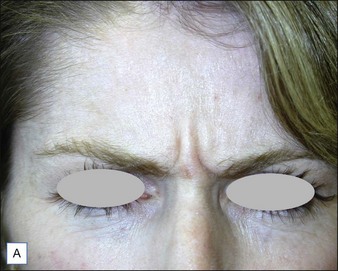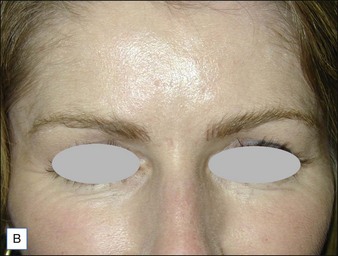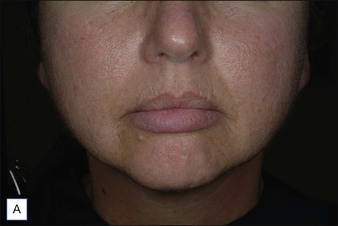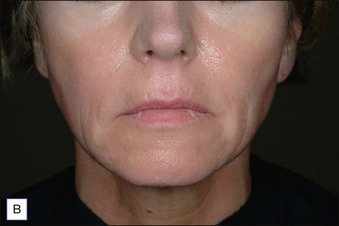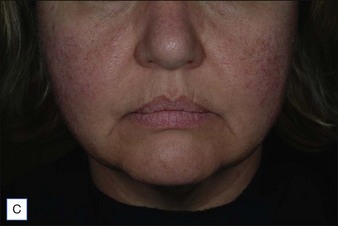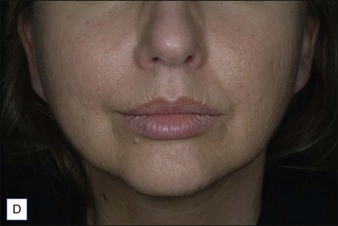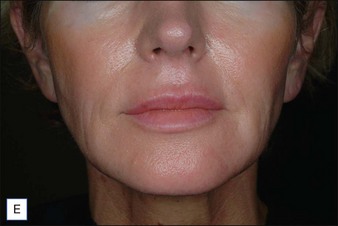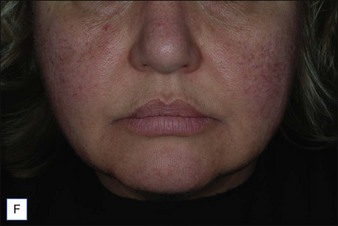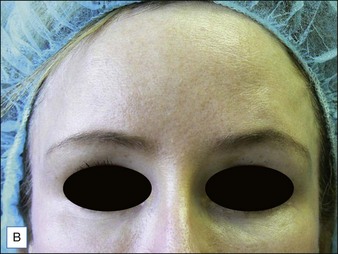22 Combination treatment
Summary and Key Features
• Aging in the face is not simply defined by the appearance of wrinkles
• Treatments targeting superficial rhytides do not address the underlying loss of volume or changes in skin texture or pigmentation
• A three-dimensional approach to facial augmentation must consider the interaction and influence of adjacent areas
• Multiple modalities may be required for optimal outcomes
• Current approaches to rejuvenation combine augmentation and contouring with movement control
• Augmentation of entire regions may eliminate the need for additional procedures
• Lasers and light-based therapies improve pigmentation and texture of the skin
• The popularity of surgical procedures has declined with the availability of less-invasive options
• BoNT enhances the outcome of soft tissue augmentation, resurfacing, and surgical procedures
• Concomitant BoNT extends the duration of the filling agent and improves cosmetic appearance
• Used in combination with resurfacing, BoNT promotes better healing of newly remodeled skin
• Chemodenervation targets dynamic rhytides and immobilizes musculature underlying or surrounding a wound or surgical incision
• Immobilization of musculature promotes healing and prevents dehiscence, particularly for wounds or scars that lie in an area of great mobility
• Reduced muscular activity during the healing process leads to superior cosmesis
Soft tissue augmentation
In the last few years, clinicians have gained a greater appreciation for the three-dimensional approach to facial rejuvenation. Treating the surface of the skin – the lines and wrinkles that emerge over time – does not address the volume loss that characterizes the aging process. Volume loss in the glabella and forehead may combine with brow and eyelid ptosis and reduced lateral brow projection (Fig. 22.1). Repetitive movements of facial expression, loss of bone, and thinning of the skin due to photodamage all exacerbate this age-related fat depletion. Loss of support from underlying bony structures and tissue causes skin to sag and reposition over the changing contours of the face.
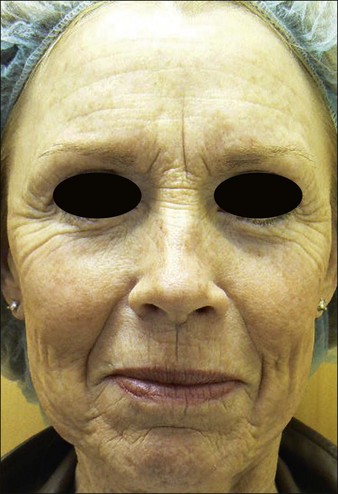
Figure 22.1 The aging face is characterized by loss of volume, bony changes, thinning skin, and rhytides and folds.
Current approaches to facial rejuvenation combine augmentation and contouring with movement control, using BoNT in combination with HA fillers to achieve results that are longer lasting and more satisfying in resting glabellar rhytides, brow-height adjustment, horizontal forehead lines, nasojugal folds, sculpting the zygomatic and perioral regions, and to improve the appearance of the neck (Table 22.1). Pre-treatment with BoNT serves to reduce the dynamic component of the target rhytide, which may allow more accurate estimation of the volume of filler needed and preventing overcorrection. Moreover, chemodenervation may increase the longevity of the implant by reducing microextrusion caused by repetitive muscular motion.
Table 22.1 BoNT and soft tissue augmentation
| Filling agents | Indications for combination therapy | Outcomes |
|---|---|---|
| Hyaluronic acid | ||
| Calcium hydroxylapatite | ||
| –Radiesse® | ||
| Collagen | ||
| –Evolence® | ||
| Poly-l-lactic acid | ||
| –Sculptra® |
A number of studies have shown superior efficacy and patient satisfaction associated with combination therapy compared to fillers alone, particularly in individuals with deep resting rhytides. In 2003, Carruthers and colleagues compared the efficacy of BoNT alone or in combination with hyaluronic acid (HA) in 16 patients with moderate-to-severe resting glabellar rhytides via retrospective analysis. Response to the filling agent plus chemodenervation was compared clinically and photographically to the response to BoNT alone. In 94% of patients receiving combination therapy, severity of rhytides decreased from moderate or severe to mild. By contrast, patients receiving BoNT alone experienced only moderate success. To further examine the relationship between chemodenervation and filling agents, Carruthers and Carruthers conducted a randomized trial of 38 patients with moderate-to-severe glabellar rhytides receiving HA alone or in combination with BoNT; the latter group showed a better response both at rest and on maximum frown (Fig. 22.2). The addition of BoNT also extended the duration of the filling agent, from 18 weeks for HA alone, to 32 weeks for combination therapy. Patel and colleagues found improved clinical effects of longer duration and greater patient satisfaction in 65 subjects who received BoNT and collagen for the treatment of glabellar rhytides compared to patients who received either modality alone. In 2010, Carruthers and colleagues demonstrated similar results in a multicenter, randomized trial of 90 women treated with BoNT, HA, or in combination for rejuvenation of the perioral area and lower face. Combination therapy was superior to either modality used alone (Fig. 22.3).
Although initially considered treatment for only deeper folds and rhytides, combination treatment with toxins and fillers is considered the standard regimen for facial rejuvenation in many cosmetic offices, with a greater emphasis on augmentation. This shift comes, in part, from a greater understanding of the three-dimensional nature of aging, particularly loss of volume from and bone remodeling in the malar and zygomatic regions, brow, and infraorbital hollow. Moreover, clinicians take a more holistic approach, considering not only the treatment of targeted rhytides and folds, but also their interaction with adjacent regions and the influence of augmentation on the appearance of the face as a whole. Volumizing the glabella and medial forehead, for example, can lift the brow, soften forehead lines, elevate the root of the nose, and lessen horizontal procerus rhytides (Fig. 22.4). The authors (JC and AC) use fillers increasingly to layer in a smooth, thin sheet of filler throughout entire regions (i.e. the forehead, upper lip, sides of the chin and anterior cheeks), lessening the need for other modalities.
Lasers and light-based therapies
Lasers – including broadband light and radiofrequency devices – have become an indispensable part of the cosmetic surgeon’s armamentarium in combating photoaging (Table 22.2). Concomitant use of BoNT and these devices leads to optimal improvement of dynamic rhytides, superior and longer-lasting outcomes, better healing of newly remodeled skin, and a more permanent eradication of wrinkles.
Stay updated, free articles. Join our Telegram channel

Full access? Get Clinical Tree


